I can't seem to get these concepts straight.
To start, what are the official definitions of each?
My current understanding is that: \$ w_0 = \sqrt{\frac{1}{LC}} \$ is the natural (and resonant?) frequency that an undriven LC circuit (or a RLC circuit with no damping) oscillates at. When we add nonzero damping though, we then get that the natural frequency that the system tends to oscillate at is \$ s = \frac{R}{2L} \pm \sqrt{\frac{R}{2L}^2 - w_0^2} \$.
(Then there is the damped natural frequency \$ w_d = \sqrt{w_0^2-\frac{R}{2L}^2} \$ for an underdamped system -- where does this come in?)
Why are there two natural frequencies -- in real life which one does the circuit actually oscillate at? Are these the same natural frequencies for ANY configuration of R, L, C (series, parallel, more complex setups, etc)? Is yes, why does that intuitively make sense? If not, is there any intuition behind the different expressions for natural frequency for series/parallel? (Is the freq greater or less, and how can we roughly judge from a circuit schematic whether its natural frequency will be high/low?)
In the nonzero damping case, does \$ w_0 \$ just become an abstract quantity? Why is it that when we have RLC filters, the peak frequency (where we have the greatest response) is still \$ w_0 \$ and not the more complex expression we have above?
Where does quality factor come into this? Is it always \$ \frac{w_0L}{R} \$ regardless of the circuit setup? (again, what's the intuition to this answer?)
Correct any misconceptions I may have -- I'd love to understand this topic more deeply. Thanks so much in advance!



